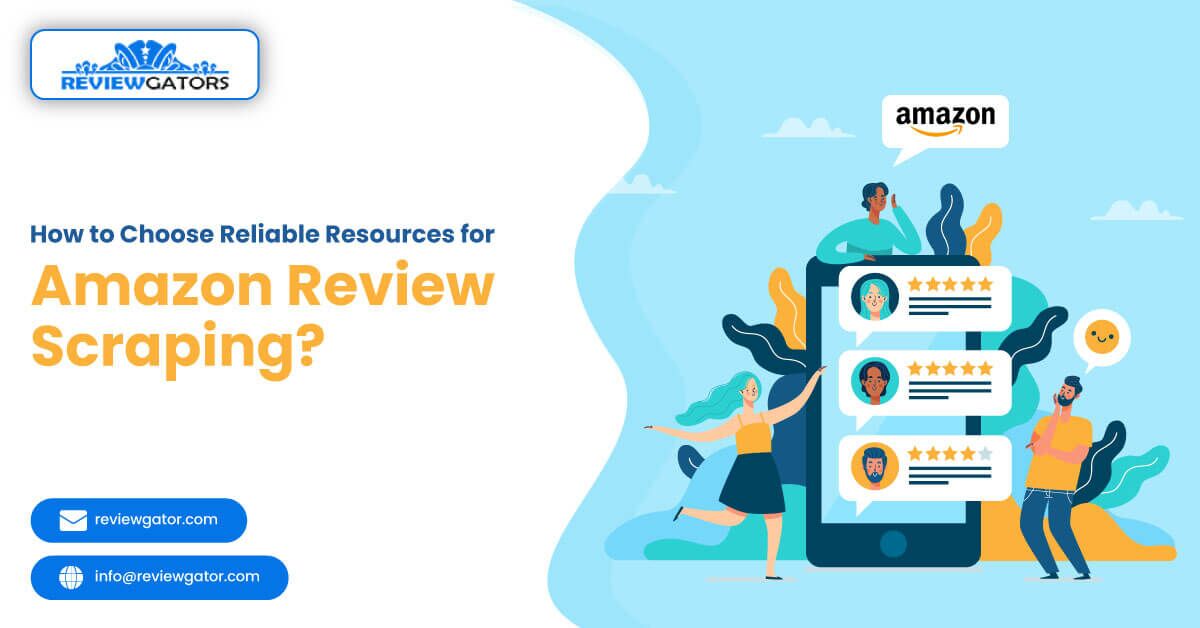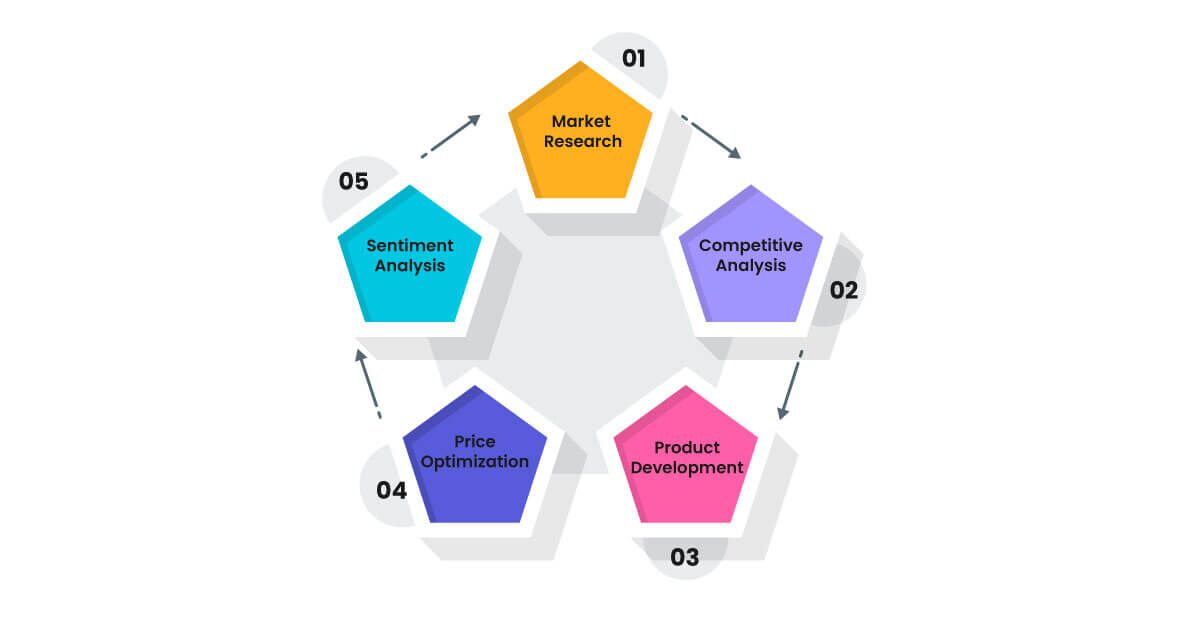
Amazon is a leading e-commerce site with large volumes of customer reviews. These reviews are very important for businesses and researchers, as they offer insights into how happy customers are, what they think about a product, and how well a product competes with others. But how can we access this helpful information ethically and efficiently? That’s when Amazon Reviews Scraping comes into play. It’s an automated tool that collects reviews from the Amazon website using smart techniques.
However, Amazon has complex measures to block this scraping, and there are rules of right and wrong to consider. This blog will show trustworthy ways to scrape Amazon reviews, giving you the information you need to make wise decisions.
Why Scrape Amazon Reviews?

Before we start, let’s look at why it’s a beneficial idea to scrape Amazon reviews.
- Market Research: Understand how customers feel about certain products or brands. Find out what’s popular and what could be better.
- Competitive Analysis: Find out what customers like or don’t like about other competing products based on their comments.
- Product Development: Learn what customers want or like, help decide how to improve your products in the future.
- Price Optimization: Review customer reviews to see if your pricing strategy works well.
- Sentiment Analysis: Discover the feelings behind customer reviews to learn what people think about your brand.
Reliable Resources for Amazon Reviews Scraping
Here’s a list of reliable resources for Amazon review scraping, highlighting their strengths and considerations:
Web Scraping Frameworks
Web scraping frameworks equip you to build your own scraping tools, offering maximum control and customization. Here are some popular options:
- Scrapy (Python): A powerful and versatile framework with extensive community and documentation.
- Beautiful Soup (Python): A user-friendly library for parsing HTML and extracting data. It is ideal for simpler scraping tasks.
- Selenium (Python): Best suited for scraping dynamic content rendered by JavaScript, often found on modern websites.
Pros:
- Maximum control and customization of the scraping process.
- Ability to target specific Amazon product pages and extract desired data points.
Cons:
- Requires programming expertise, typically in Python.
- Steeper learning curve compared to other options.
- This approach is ideal for developers or those comfortable with coding who want a tailored solution for their scraping needs.
Web Scraping APIs
APIs (Application Programming Interfaces) provide a convenient way to access scraping functionality without coding. Here are some reputable options:
- Apify: A cloud-based platform with pre-built scraping templates, including one specifically for Amazon reviews scraping.
- ReviewGator: Offers various scraping APIs that can be incorporated with all the programming languages.
- WebScrapingAPI: Provides a simple API to scrape data from websites, including Amazon.
Pros:
User-friendly and convenient – no coding required.
Many APIs offer features like proxy rotation for anonymity.
Cons:
May have limitations on data volume or functionality (depending on the plan).
Can be expensive for large-scale scraping needs.
APIs are great for beginners or those without coding experience who want a quick and easy solution.
Paid Scraping Services
Several companies offer dedicated Amazon scraping services. These services typically handle aspects like:
- Data Extraction: They handle the scraping process itself, delivering the desired data.
- Data Cleaning and Preprocessing: The data is cleaned and formatted to your specifications.
- Data Delivery: You receive the scraped data in a convenient format.
Pros:
Hands-off approach; leaves the scraping process to the experts.
Data is often delivered clean and preprocessed, saving you time.
Dedicated customer support may be available.
Cons:
Most expensive option, especially for large-scale scraping.
Less control over the scraping process compared to building your own scraper.
Paid services are a good option for those who lack the technical expertise or time to build their own scraper and value a hands-off approach.
Free Option (Open-Source Platforms)
The open-source community provides some scraping tools designed explicitly for Amazon reviews.
- Pros: Free and readily available. Good starting point for beginners or small projects.
- Cons: Customization may require some programming knowledge. Limited features compared to paid options.
Academic and Research Databases
Those studying Amazon customer review data scraping results can find a wealth of data in academic databases.
JSTOR and Google Scholar
Sometimes, these sites have study reports that use Amazon’s customer reviews. They can be a secondary source for reviewing information.
ResearchGate
Networking with professional researchers allows you to access shared datasets, including Amazon reviews. This is handy for academic and research work.
Review Aggregator Websites
These websites collect reviews from many places, including Amazon. They usually don’t give you the raw data to use, but they can help you start analyzing opinions.
Sites like Trustpilot and Sitejabber bring together reviews from different places. You can use them to get a general idea of what people think about a product, but they can’t give you the same detailed information you’d get directly from Amazon.
Additional Resources
Online Scraping Communities: Websites like GitHub, Stack Overflow, or Reddit’s r/DataHoarder and r/webscraping are great places to learn about Amazon review scraping. People there share tips, tools, and techniques, helping each other out.
Scraping Tutorials and Guides: Find online guides or tutorials that teach you how to scrape data step by step, especially for the specific tools or software you want to use.
Continue reading https://www.reviewgators.com/how-to-choose-reliable-resources-for-amazon-review-scraping.php